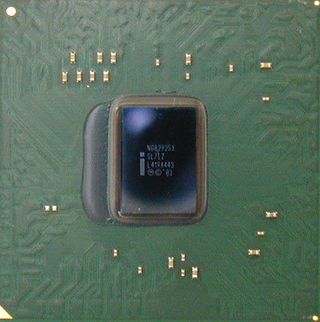Looking ahead to Intel's 925XE chipset and FSB1066
P4 Processor 720... At 64 Bits?
In late fall, a new Pentium 4 model called the 720 will be introduced to replace the Extreme Edition. This baby also runs at FSB1066, but comes with 2 MB L2 cache. At an initial clock speed of 3.73 GHz, this one should be able to set things on fire. And this could literally be the case, because the TDP (Thermal Design Power) will remain on a high level. Also included are all the features of E0 stepping, including DX and Thermal Monitoring 2.
As the Extreme Edition is condemned to obsolescence, and Intel has repeatedly tried to make clear that the processor numbers are not a measure of performance, we have reason to believe that the 720 will be EM64T-enabled. In addition, the implementation and validation of XD requires Intel's physical address extension PAE36. This was originally designed for the Xeon in order to exceed the 4 GB RAM maximum of 32 Bit processors.
925XE And FSB1066

The 925XE internally does not differ from 925X and even the price is unchanged: Both are $ 50 at 1,000 quantities.
The 925XE is the twin of 925X, but it finally supports FSB1066. As the Front Side Bus works in QDR mode (quad data rate or 'quad-pumped'), it can transmit four times the data than a single transmission. Accordingly, marketing folks like to call it a 1,066 MHz bus.
The bandwidth of FSB1066 is 8.5 GB/s, as opposed to the 6.4 GB/s with FSB800. Running at Dual DDR2-533, the system is able to run FSB and RAM synchronously, as both the total bandwidth and the basic clock speed are the same.
There is, however, one thing that Intel distinctly ignores in its roadmaps: There is no mention of DDR2-667 memory, although all three DDR2 speed grades have been standardized by JEDEC in January 2004. As more and more 667 DIMMs are becoming available, we suppose that Intel will end up supporting the faster memory. For one thing, the benchmarks clearly benefit from it (see below), and for another, the chipset did not cause any problems running at up to DDR2-740. Finally, motherboard makers don't even need to redesign their boards.
The price for the basic version of the chipset is quoted at being $50 per 1000 units - that's the same as for the 925X. Anyone who wants SATA-RAID has to shell out an extra $3, for $5 more you get the wireless option, and for $7 the full package. It's not entirely clear, though, as to why Intel will still offer the 925X even after the 925XE becomes available.
Stay On the Cutting Edge: Get the Tom's Hardware Newsletter
Get Tom's Hardware's best news and in-depth reviews, straight to your inbox.
When the 925XE is launched, Intel will also release 915GV at the same time. This one is a 915G without x16 PCI Express interface. There will also be a 910GL with support for DDR2 memory removed.

Current page: P4 Processor 720... At 64 Bits?
Prev Page P4 E0 Stepping: Thermal Monitoring 2 And XD-Bit Next Page DDR2-667 Is Coming!